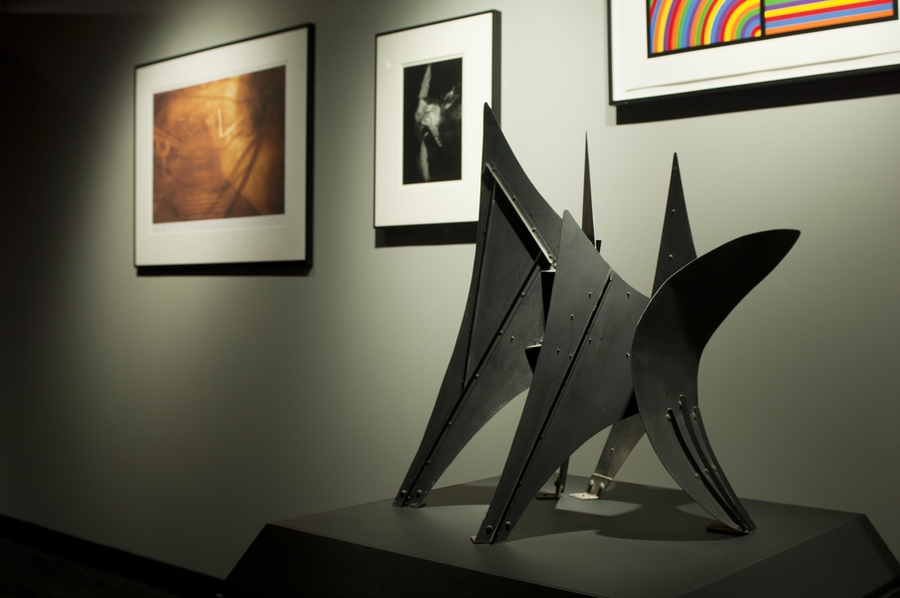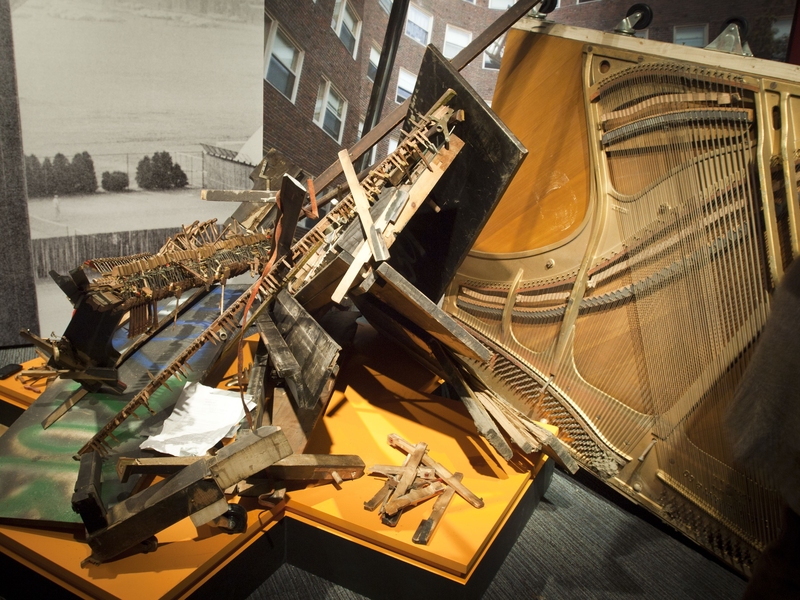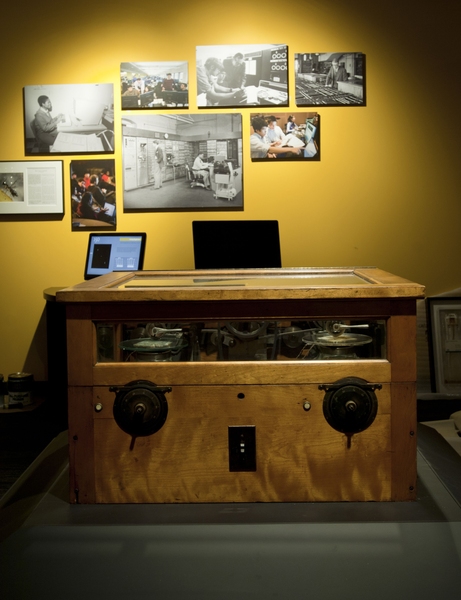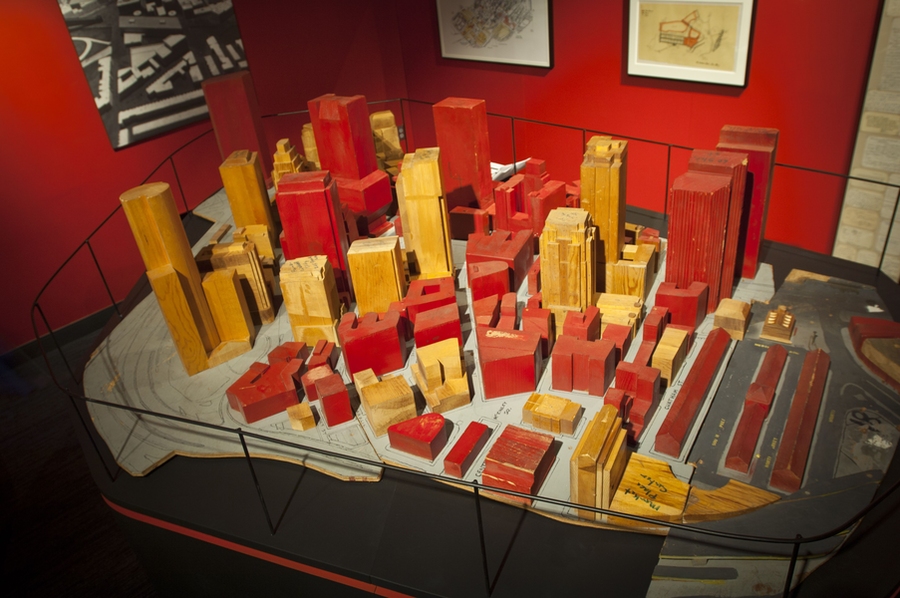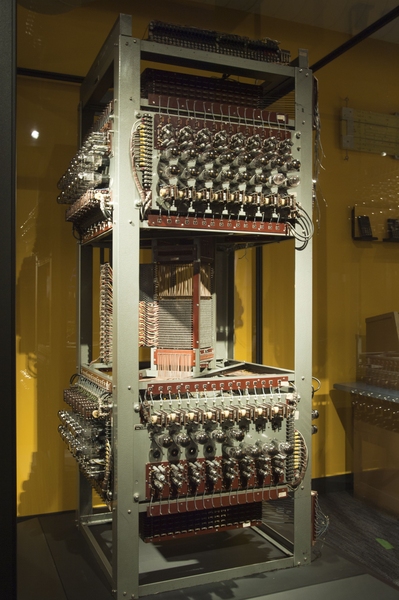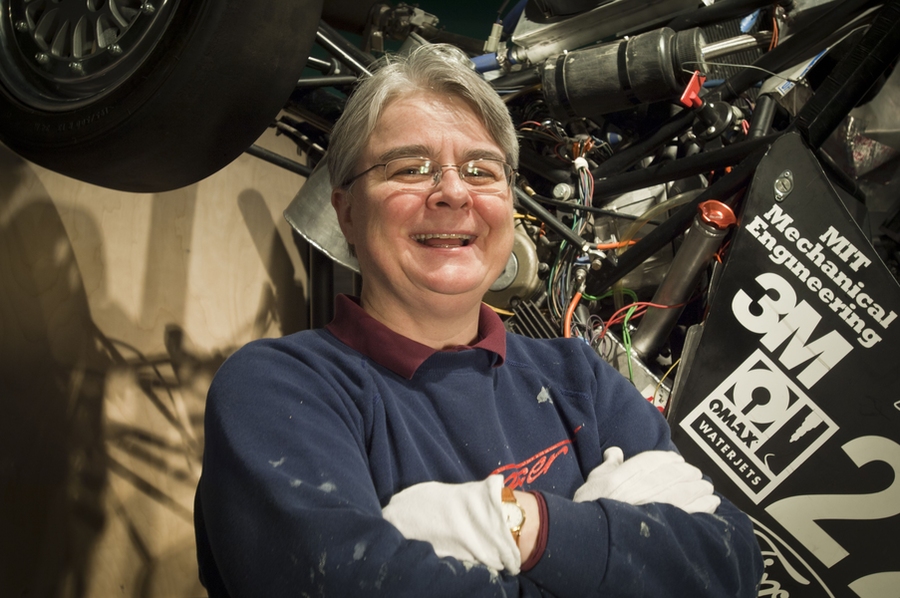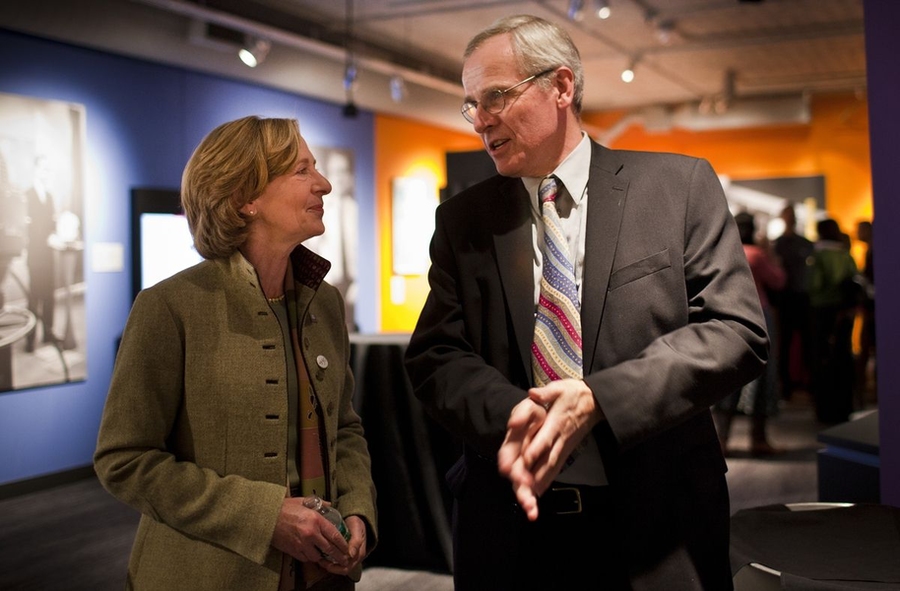MIT’s 150-day celebration of the 150th anniversary of its founding officially begins this afternoon as the MIT Museum unveils a new exhibition of Institute objects and stories drawn from its rich history.
The most expansive show developed by the museum since its founding 40 years ago, the MIT 150 Exhibition is built upon MIT’s culture of inclusiveness and collaboration: The organizers of the exhibition opened up the process of selecting its content to the MIT community, including students, faculty, staff and alumni, who nominated items they felt best represented MIT’s history and culture. Many of the items selected are on loan, and being shown in public for the first time.
“This is not a traditional exhibit, and it provides a vision for how to curate exhibits in the future,” said Deborah G. Douglas, the museum’s curator of science and technology, who started planning the show two years ago through a collaborative curatorial process.
That process began during the spring of 2009 when students, faculty, alumni, staff and other interested parties were invited to nominate their favorite pieces of MIT history. By that fall, when the museum had received nominations for more than 700 objects and stories, it held an open vote to select 150 especially compelling and significant artifacts for the exhibition.
Douglas then organized the artifacts around 10 themes that would help tell MIT’s story in a logical, visually compelling fashion. “We really had to think imaginatively about the ways these objects spoke to us that would also make sense in a museum,” she explained. The themes include the role that Boston has served as a living laboratory for MIT; the manner in which MIT has used numbers — analog and digital — to move the world to the computer age; and the entrepreneurial spirit that has spurred the more than 25,000 companies founded by MIT alumni, faculty, students and staff.
Members of the MIT community are invited to attend a preview of the exhibition from 3 p.m. to 5 p.m. today. The MIT 150 Exhibition formally opens to the public on Saturday, Jan. 8.
150 artifacts of MIT
"Celebrating an institutional birthday feels a little bit weird and unfamiliar, and one may ask, ‘why care?,’” said President Susan Hockfield at today’s preview reception. “I believe this exhibition is the answer. I can only describe it as mind blowing. It include many objects that are simply brilliant and bold, and many that are just completely ridiculous, and isn’t that just MIT?”
While the exhibition highlights 150 stories about MIT, the most important to Hockfield is that MIT continues to reinvigorate the nation and the world through innovation. “It’s not only the story of our past, but also our fuel for the future,” said Hockfield, reminding the MIT community of the responsibility that the Institute and its fellow research institutions have in leading the way to solve the today’s most pressing problems.
“This is an opportunity for people to step back and wonder what this place is really about,” explained MIT Museum Director John Durant. He hopes the collection will help members of the MIT community consider aspects of the Institute that they may never have thought of before, such as the importance of the arts at MIT. Durant believes the exhibition will provide useful insight into the “internal workings of a first-rate research university that the public wouldn’t get any other way.”
While the MIT 150 Exhibition is designed to reflect the impact that MIT has had on education, industry and government over the past 150 years, the objects are also meant to express MIT’s motto, “mens et manus,” or “mind and hand,” and the new hands-on approach to technical education that MIT’s founder, William Barton Rogers, envisioned.
Those objects range from models and machines to documents, paintings, photographs and audio recordings. Visitors will discover large-scale artifacts such as Whirlwind, the first digital computer capable of operating in real-time that was developed at MIT in the late 1940s, as well as an outer-space simulator that was used to train astronauts on how to use the Apollo spacecraft’s control system. One of the largest sections of the exhibition features a wooden model of the city of Boston that MIT researchers used for wind-tunnel studies of the city’s buildings during the 1970s and 1980s.
In addition to objects that highlight MIT’s technological achievements, the show features artifacts that represent MIT’s unique culture, including photos and remnants from student pranks known as “hacks.” With more than 700 votes, the most popular nomination for the MIT 150 Exhibition was the Baker House Piano Drop, an annual tradition in which students commemorate the last day to drop spring classes by dropping a piano from the roof of the six-story Baker House dormitory. The exhibition features pieces from the piano that was shattered last spring.
Other culturally significant artifacts include recordings from an impromptu Grateful Dead concert held on campus in 1970, and episodes of the MIT Science Reporter public-television program from the 1950s and 1960s that explained science and technology to a general audience. Visitors can also peruse copies of some of the most influential publications published by MIT Press.
The exhibition isn’t limited to old artifacts, but also features recently developed objects like the virus-built battery developed by Angela Belcher, the Germeshausen Professor of Materials Science and Engineering and Biological Engineering, that MIT President Susan Hockfield presented to President Barack Obama during a visit to the White House in 2009.
A permanent exhibition
Although the exhibition is scheduled to conclude on Dec. 31, 2011, one of its lasting legacies will be a permanent online archive developed from the MIT 150 Exhibition website that was launched today. Visitors to the site are invited to comment on the exhibition and suggest artifacts they believe should have been included.
Admission to the MIT Museum will be free from 5 to 8 p.m. on Friday, Jan. 14, when museum curators will lead tours and demonstrations of objects in the exhibition.
The most expansive show developed by the museum since its founding 40 years ago, the MIT 150 Exhibition is built upon MIT’s culture of inclusiveness and collaboration: The organizers of the exhibition opened up the process of selecting its content to the MIT community, including students, faculty, staff and alumni, who nominated items they felt best represented MIT’s history and culture. Many of the items selected are on loan, and being shown in public for the first time.
“This is not a traditional exhibit, and it provides a vision for how to curate exhibits in the future,” said Deborah G. Douglas, the museum’s curator of science and technology, who started planning the show two years ago through a collaborative curatorial process.
That process began during the spring of 2009 when students, faculty, alumni, staff and other interested parties were invited to nominate their favorite pieces of MIT history. By that fall, when the museum had received nominations for more than 700 objects and stories, it held an open vote to select 150 especially compelling and significant artifacts for the exhibition.
Douglas then organized the artifacts around 10 themes that would help tell MIT’s story in a logical, visually compelling fashion. “We really had to think imaginatively about the ways these objects spoke to us that would also make sense in a museum,” she explained. The themes include the role that Boston has served as a living laboratory for MIT; the manner in which MIT has used numbers — analog and digital — to move the world to the computer age; and the entrepreneurial spirit that has spurred the more than 25,000 companies founded by MIT alumni, faculty, students and staff.
Members of the MIT community are invited to attend a preview of the exhibition from 3 p.m. to 5 p.m. today. The MIT 150 Exhibition formally opens to the public on Saturday, Jan. 8.
150 artifacts of MIT
"Celebrating an institutional birthday feels a little bit weird and unfamiliar, and one may ask, ‘why care?,’” said President Susan Hockfield at today’s preview reception. “I believe this exhibition is the answer. I can only describe it as mind blowing. It include many objects that are simply brilliant and bold, and many that are just completely ridiculous, and isn’t that just MIT?”
While the exhibition highlights 150 stories about MIT, the most important to Hockfield is that MIT continues to reinvigorate the nation and the world through innovation. “It’s not only the story of our past, but also our fuel for the future,” said Hockfield, reminding the MIT community of the responsibility that the Institute and its fellow research institutions have in leading the way to solve the today’s most pressing problems.
“This is an opportunity for people to step back and wonder what this place is really about,” explained MIT Museum Director John Durant. He hopes the collection will help members of the MIT community consider aspects of the Institute that they may never have thought of before, such as the importance of the arts at MIT. Durant believes the exhibition will provide useful insight into the “internal workings of a first-rate research university that the public wouldn’t get any other way.”
While the MIT 150 Exhibition is designed to reflect the impact that MIT has had on education, industry and government over the past 150 years, the objects are also meant to express MIT’s motto, “mens et manus,” or “mind and hand,” and the new hands-on approach to technical education that MIT’s founder, William Barton Rogers, envisioned.
Those objects range from models and machines to documents, paintings, photographs and audio recordings. Visitors will discover large-scale artifacts such as Whirlwind, the first digital computer capable of operating in real-time that was developed at MIT in the late 1940s, as well as an outer-space simulator that was used to train astronauts on how to use the Apollo spacecraft’s control system. One of the largest sections of the exhibition features a wooden model of the city of Boston that MIT researchers used for wind-tunnel studies of the city’s buildings during the 1970s and 1980s.
In addition to objects that highlight MIT’s technological achievements, the show features artifacts that represent MIT’s unique culture, including photos and remnants from student pranks known as “hacks.” With more than 700 votes, the most popular nomination for the MIT 150 Exhibition was the Baker House Piano Drop, an annual tradition in which students commemorate the last day to drop spring classes by dropping a piano from the roof of the six-story Baker House dormitory. The exhibition features pieces from the piano that was shattered last spring.
Other culturally significant artifacts include recordings from an impromptu Grateful Dead concert held on campus in 1970, and episodes of the MIT Science Reporter public-television program from the 1950s and 1960s that explained science and technology to a general audience. Visitors can also peruse copies of some of the most influential publications published by MIT Press.
The exhibition isn’t limited to old artifacts, but also features recently developed objects like the virus-built battery developed by Angela Belcher, the Germeshausen Professor of Materials Science and Engineering and Biological Engineering, that MIT President Susan Hockfield presented to President Barack Obama during a visit to the White House in 2009.
A permanent exhibition
Although the exhibition is scheduled to conclude on Dec. 31, 2011, one of its lasting legacies will be a permanent online archive developed from the MIT 150 Exhibition website that was launched today. Visitors to the site are invited to comment on the exhibition and suggest artifacts they believe should have been included.
Admission to the MIT Museum will be free from 5 to 8 p.m. on Friday, Jan. 14, when museum curators will lead tours and demonstrations of objects in the exhibition.
